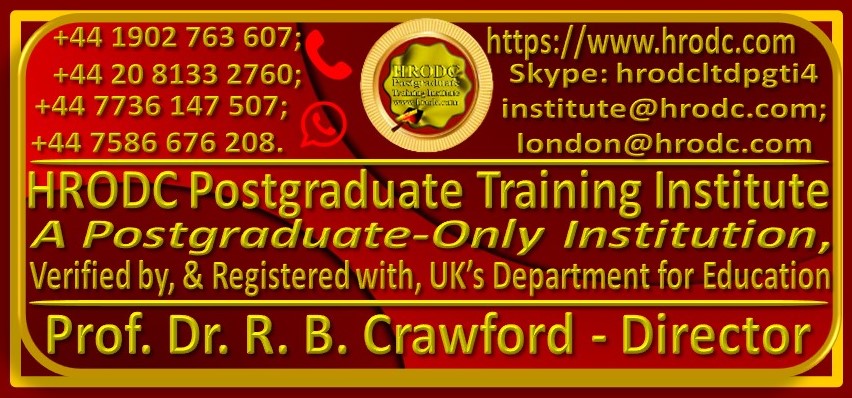|
PG Diploma in Global Marketing: Local, National & International Marketing Strategy |
Programme Number 135 -
Global Marketing: Local, National and International
Marketing, Strategic Plan and Implementation, Leading to
Postgraduate Diploma in Global Marketing.
Leading
to Postgraduate Diploma in
Global Marketing: Local,
National and International Marketing Strategy. Contents include
Global Marketing, International Marketing, Strategic Plan, Capturing
Customer Value,
Deconstructing Marketing, Understanding the Marketplace, Customer Needs,
Designing a Customer-Driven Marketing Strategy, Preparing an Integrated
Marketing Plan, Customer Relationships, Capturing Value, Marketing
Landscape, Companywide Strategic Planning, Marketing’s Role, Business
Portfolio, Planning Marketing, Marketing Strategy, Marketing Mix,
Marketing Effort, Marketing Investment,
Marketing Environment,
Macro-environment, Demographic Environment, Economic Environment,
Natural Environment, Technological Environment, Political and Social
Environment, Cultural Environment,
Marketing Information,
Marketing Research,
Marketing Dynamics, Customer and Client – Driven Value, Orientation and
Strategy, Buyer Behaviour,
Consumer Markets, Consumer Behavior, Consumer Behavior, Buyer Decision,
New Products, Business Markets, Business Buyer, Behavior, E-Procurement,
Customer-Driven Marketing Strategy,
Creating Value, Target Customers,
Market Segmentation, Differentiation and Positioning, Service Decisions,
Services Marketing, Branding Strategy, Strong Brands,
Developing New Products, Product Life Cycle,
New-Product Development Strategy, New-Product Development Process,
Product Life-Cycle Strategies, Product Decisions and Social
Responsibility, International Product and Services Marketing,
Understanding the Marketing Process, Marketing Planning Process,
Marketing Audit, Product Audit, Marketing Objectives, Integrated
Marketing Communications Plan, Sales Plan, Pricing Plan, Multichannel
Plan, Route to Market, Customer Relationship Management Plan,
Implementation Issues in Marketing Planning, Measuring the Effectiveness
of Marketing Planning, Step-by-Step Marketing Planning System.
Programme
Number 135 - Global Marketing: Local, National and International
Marketing, Strategic Plan and Implementation, Intensive Full-Time {3
Months (5 Days or 30 credit Hours Per Week)} Programme, Leading to
Postgraduate Diploma in
Global Marketing: Local, National and International Marketing Strategy
Programme
Co-ordinator:
Prof. Dr. R. B. Crawford is
Programme
Coordinator. He is the Director of HRODC Postgraduate Training
Institute, A Postgraduate-Only Institution. He has the following
Qualifications and Affiliations:
Doctor of Philosophy {(PhD) {University College
London (UCL) - University of London)};
MEd Management (University of Bath);
Postgraduate (Advanced) Diploma Science Teacher
Ed. (University of Bristol);
Postgraduate Certificate in Information Systems
(University of West London, formerly Thames Valley University);
Diploma in Doctoral Research Supervision,
(University of Wolverhampton);
Teaching Certificate;
Fellow of the Institute of Management
Specialists;
Human Resources Specialist, of the Institute of
Management Specialists;
Member of the Asian Academy of Management (MAAM);
Member of the International Society of Gesture
Studies (MISGS);
Member of the Standing Council for Organisational
Symbolism (MSCOS);
Member of ResearchGate;
Executive Member of Academy of Management (AOM).
There, his contribution incorporates the judging of
competitions, review of journal articles, and guiding the
development of conference papers. He also contributes to the
Disciplines of:
Human Resources;
Organization and Management Theory;
Organization Development and Change;
Research Methods;
Conflict Management;
Organizational Behavior;
Management Consulting;
Gender & Diversity in Organizations; and
Critical Management Studies.
Professor Dr. Crawford has been an Academic in
the following UK Universities:
University of London (Royal Holloway), as
Research Tutor;
University of Greenwich (Business School), as
Senior Lecturer (Associate Professor), in Organisational
Behaviour and Human Resource Management;
University of Wolverhampton, (Wolverhampton
Business School), as Senior Lecturer (Associate Professor), in
Organisational Behaviour and Human Resource Management;
London Southbank University (Business School), as
Lecturer and Unit Leader.
His responsibilities in these roles included:
Doctoral Research Supervisor;
Admissions Tutor;
Postgraduate and Undergraduate Dissertation
Supervisor;
Programme Leader;
Personal Tutor.
For Whom This Programme is Designed
This Programme is Designed For:
·
Marketing Executives;
·
Product Designers;
·
Relationship Managers;
·
Customer Service Managers;
·
Client Service Managers;
·
Marketing Researchers;
·
Sales Managers;
| |
















